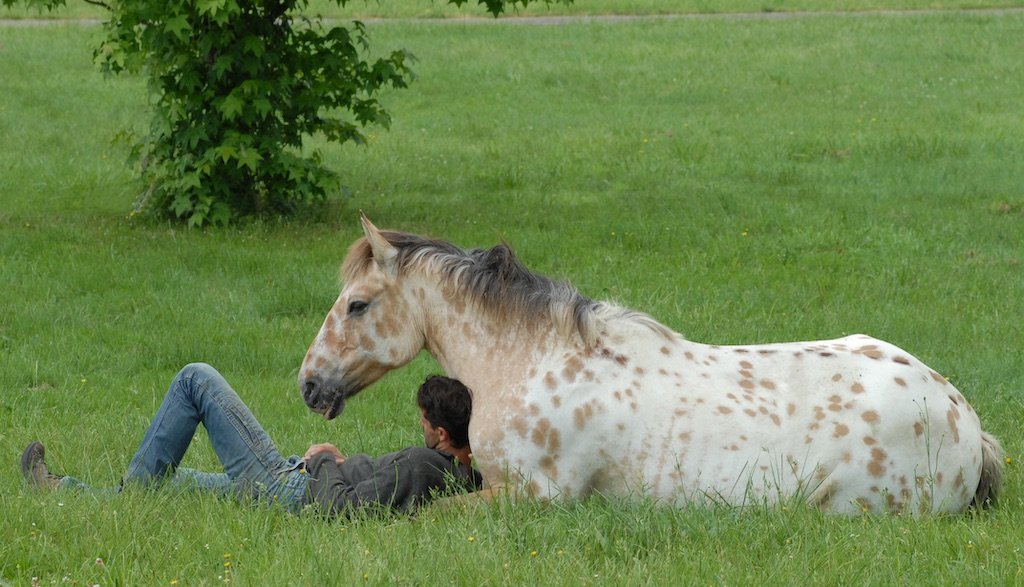Relaxation is just as important as training
Many horses are constantly in an alert state and have trouble relaxing. Taking the time to relax and do nothing can be very beneficial.
Showing the horse that it’s ok to relax around you, can be incredibly beneficial.
In autumn we start to feel nature wind down after a busy summer. The days are getting shorter, the mornings are colder and everything seems to start to slow down. This is a good time to take a page out of nature’s book and focus a little more on winding down. With our horses, most of us get so focused on the “doing” that we forget that “not-doing” is just as important. Most people have a limited time in the barn and they need to fit it into their (often hectic) schedule, so every minute spent with the horses is precious. So, we do our best to do as much as we can – we train, we brush, we do bodywork, we walk, we feed… All of that is great, but every now and then we can take some time to “not-do”.
Many horses, like many people, are always on. They are always in an alert state, always tense. The body needs any period of high activity or tension to be followed by a period of relaxation. This is how every system in the body is regulated and kept healthy. If we aren’t able to relax, eventually our digestive system will suffer, our immune system will struggle, our musculoskeletal and mental health will decline. If our body constantly feels like it’s in danger, like it does in periods of stress, it prioritizes life-saving strategies. To borrow an analogy from Robert Sapolsky, if your house is on fire, you won’t be cleaning the bathroom or washing the windows.
So, what can we do about it? There are many stress lowering strategies that we can implement to make our horse’s lives easier. You can find some of those in one of my earlier blog posts. Today, I want to encourage you to go out there and do nothing with your horse. Try a very simple meditation with them. Get comfortable, sit with them and breathe. If you are familiar with breathwork, you can try a six second inhale, followed by a six second exhale. If not, just breathe and observe your breath. It might feel weird the first couple of minutes and your horse might be very confused by this inactivity, but stay with it. Observe your body relax and observe how your horse reacts to you relaxing. If you find yourself focused on something other than the present moment, bring your awareness back to your breath and your horse.
Meditating with your horse is a great practice that benefits both horse and human.
This might seem like a waste of time, but relaxing is just as important as being active, so think of it as the other side of training. By using a simple meditation, you can show your horse that it’s ok to relax around you. Slowing down and being present in the moment is something we humans desperately need too, so this practice will benefit both of you.

